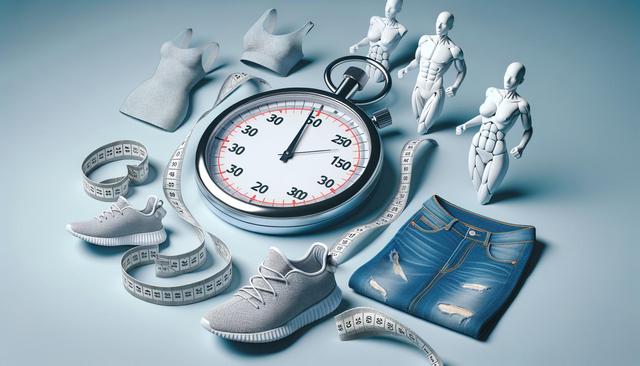Understand Calorie Deficits Without Starving Yourself
When it comes to rapid weight loss, many people assume they need to drastically cut calories. However, sustainable and safe weight loss starts with creating a calorie deficit that fuels your body while still promoting fat loss. For busy individuals, it’s about making smart food choices rather than skipping meals. According to the Mayo Clinic, losing one to two pounds per week is both safe and effective, and this can typically be achieved by reducing daily intake by 500 to 1,000 calories.
Instead of crash dieting, opt for nutrient-dense foods that keep you satisfied longer. Focus on:
- High-protein meals to preserve muscle mass
- Fiber-rich vegetables to boost fullness
- Healthy fats like avocado and nuts in measured portions
- Low-calorie, hydrating snacks like cucumbers or berries
Meal prepping can significantly help you stay on track. Many free meal plans are available online that align with healthy calorie deficit goals. These plans typically include balanced meals with lean proteins, complex carbs, and portion control tips to support weight management without deprivation.
Incorporate High-Intensity Interval Training (HIIT)
High-Intensity Interval Training, or HIIT, continues to be a popular and time-efficient workout method for those seeking to lose weight fast. It alternates short bursts of intense activity with brief periods of rest or lower-intensity movements. Studies show that HIIT can elevate metabolism for hours after your workout, increasing calorie burn even while at rest.
For Americans with tight schedules, HIIT is a practical choice. A simple 20-minute session, three to four times a week, can yield noticeable results. Some effective HIIT routines include:
- Jumping jacks and bodyweight squats in 30-second intervals
- Sprint-walk combinations on a treadmill or outdoors
- Circuit-style workouts combining lunges, push-ups, and planks
The key to success is consistency. Pairing HIIT with a well-managed calorie intake can accelerate weight loss while preserving muscle tone. Unlike long cardio sessions, HIIT adapts well to home workouts, requiring little to no equipment.
Make Small Habit Shifts That Last
Rapid weight loss doesn’t have to mean extreme changes. In fact, small lifestyle adjustments often lead to more sustainable results. For example, simply increasing your water intake, reducing sugary beverages, or walking more during the day can collectively make a significant impact on your overall calorie burn and appetite control.
Some practical daily changes include:
- Taking the stairs instead of the elevator
- Replacing refined carbs with whole grains
- Getting 7–8 hours of sleep to regulate hunger hormones
- Using a smaller plate to manage portion sizes
These incremental shifts are easier to maintain and tend to lead to more consistent weight loss. Research supports that willpower is more sustainable when built into routines, rather than relying on motivation alone. By anchoring new habits to existing ones—like stretching while your coffee brews—you’re more likely to stick with them over time.
Boost Metabolism Through Daily Movement
Metabolism plays a central role in how quickly your body burns calories. While genetics influence metabolic rate, lifestyle factors like movement and dietary choices have a strong impact. For those aiming to lose weight fast and safely, staying active throughout the day—not just during workouts—can make a difference.
Ways to increase daily movement include:
- Standing or pacing during phone calls
- Using a standing desk or taking short movement breaks each hour
- Doing quick stretches or yoga routines in the morning
- Walking or biking to nearby errands instead of driving
These small bursts of activity, known as Non-Exercise Activity Thermogenesis (NEAT), contribute significantly to daily energy expenditure. When paired with structured exercise and a calorie-conscious diet, boosting NEAT can help you lose weight more efficiently without exhausting your energy reserves.
Choose Whole Foods Over Processed Alternatives
Whole foods are rich in nutrients and fiber, which help support metabolism and regulate appetite. Processed foods, in contrast, often contain added sugars, unhealthy fats, and preservatives that can hinder your weight loss efforts. For busy Americans, convenience doesn’t have to mean unhealthy—many whole food options are fast to prepare and satisfying.
Consider incorporating these whole food swaps:
- Replace sugary cereal with oatmeal and fruit
- Swap packaged snacks for raw nuts or veggie sticks
- Use grilled chicken or beans over processed deli meats
- Choose brown rice or quinoa instead of white rice or pasta
Whole foods also tend to have a lower energy density, meaning you can eat more volume for fewer calories—an important factor when trying to lose weight fast without feeling hungry. Planning meals around simple, minimally processed ingredients supports both short- and long-term health goals.
Conclusion: Sustainable Speed Matters
Rapid weight loss doesn’t have to come at the cost of your health or energy levels. By applying science-backed strategies—like managing calorie deficits, incorporating HIIT workouts, adopting small daily habits, increasing metabolism through movement, and choosing whole foods—you can achieve meaningful results in a realistic timeframe. These approaches are especially helpful for busy professionals who want to lose weight fast and safely without turning to extreme diets.
Consistency and balance are your allies. Start with one or two habit changes, build momentum, and adjust as needed. Remember, the goal is not just quick results, but sustainable progress that fits into your lifestyle.






